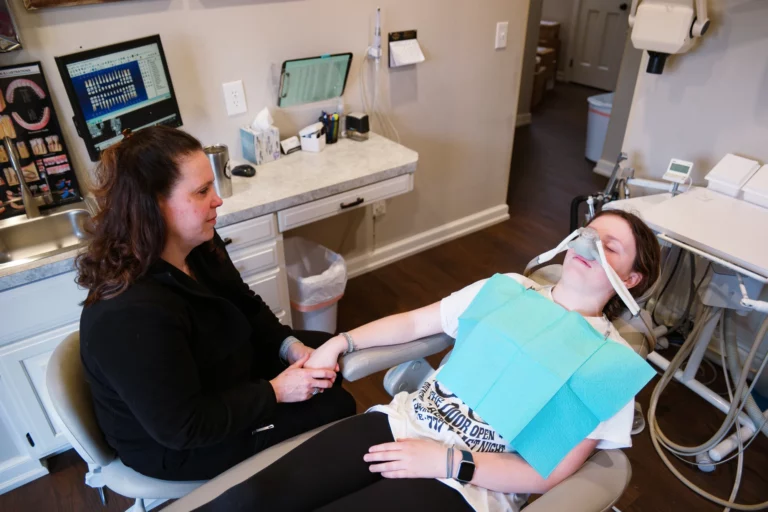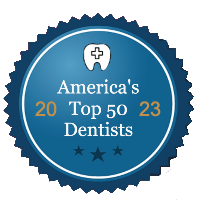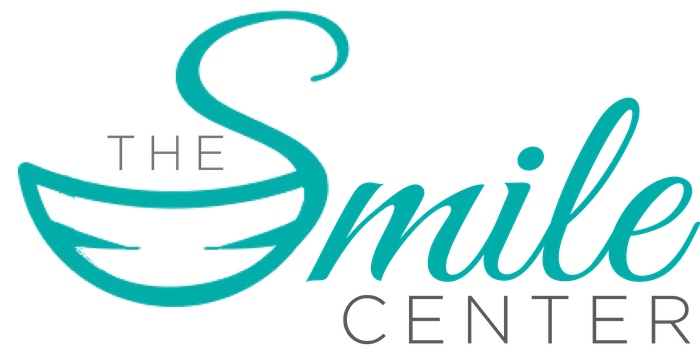Sedation
Meet Brandy, our certified sedation registered nurse

We cater to cowards

Sedation dentistry allows your doctor to provide a variety of dental treatments safely and comfortably for patients who experience anxiety when visiting the dentist.
Leave Discomfort and Anxiety Behind.
Imagine undergoing complex dental treatment like a root canal, extraction, or oral surgery. When your treatment is complete, you have no recollection of the time it took, the pain, the noise, or the discomfort you were expecting. We are pleased to offer our patients the option of comfortable, safe, and effective sedation dentistry. Patients who benefit from sedation dentistry have:
- A fear or anxiety of being at the dentist
- A hard time sitting still for long periods
- A hard time getting (and staying) numb from anesthetics
What is Sedation Dentistry?
Sedation dentistry allows your doctor to provide a variety of dental treatments safely and comfortably for patients who experience anxiety when visiting the dentist. There are several benefits to sedation dentistry, including:
- No memory of undergoing the procedure
- No sense of time while under sedation
- No sense of smell or sound
- No fear or anxiety during treatment
Patients who have undergone a procedure using sedation dentistry will tell you it is a simple, relaxing way to experience dentistry.
Types of Sedation.
There is no need to be nervous about having sedation dentistry at our practice. The American Dental Association licenses us, and you will find that we are both respectful and professional at all times.
Sedation dentistry is closely regulated by law. There are three sedative states at which your dentist can administer your treatment: mild sedation, moderate sedation, and deep sedation.
- Mild Sedation — Anxiolysis is the lightest form of sedation dentistry and is often used for patients with mild anxiety, more lengthy procedures, or more complex situations. Mild sedation is usually administered orally. You remain awake or very sleepy throughout the entire process. You can breathe independently, but you will feel a great sense of relaxation. Patients typically recover from anxiolysis sedation within a few hours after the procedure is complete. Nitrous oxide inhalation (laughing gas) is another form of mild to moderate sedation that results in relaxation during treatment.
- Moderate Sedation — Used for patients with moderate dental anxiety and for patients who need longer or more complex procedures, conscious sedation often refers to the use of light IV sedation. With conscious sedation, you will remain awake throughout your procedure but will be in a deep state of relaxation. It is recommended that patients receiving conscious sedation have a parent, spouse, or friend accompany them to appointments because it can take several hours for the sedative to wear off and driving may be unsafe.
- Deep Sedation — Patients receiving deep sedation go between consciousness and unconsciousness during their dental procedure. Patients often have no recollection of the treatment. They cannot respond to commands even if they are awake at times during the process. It is recommended that patients receiving deep sedation have a parent, spouse, or friend accompany them to appointments because it can take several hours for the sedative to wear off and driving may be unsafe.
How is Sedation Administered?
- Inhalation — Nitrous oxide, or laughing gas, is the most frequently used method for easing mild to moderate anxiety. Recovery is quick, so you can resume your normal activities immediately.
- Oral — A common technique for dental sedation is oral sedation. It is easy and does not require the use of needles. You will be given a prescription pill which is taken about an hour before your appointment. You will be fully relaxed by the time you arrive at our office.
- Intramuscular (IM) — Intramuscular sedation, which involves an injection of sedative drugs into the muscles of the upper arm or upper thigh, can result in sedation within a short amount of time.
- Intravenous (IV) — In IV sedation, a sedative is administered intravenously or directly into a vein. The sedation can be quickly modified to your state of consciousness and continued as long as necessary for the procedure.
What Does it Mean to be an IV Certified and Licensed Practitioner?
A dentist who is IV certified and licensed to administer IV sedation has received additional specialty training and has been legally certified by the state’s Board of Dental Examiners to deliver medical drugs that alter a patient’s consciousness for a comfortable, pain-free treatment.
Don’t hesitate to contact our practice to schedule a consultation, learn more about sedation dentistry, and determine which method may suit you.







